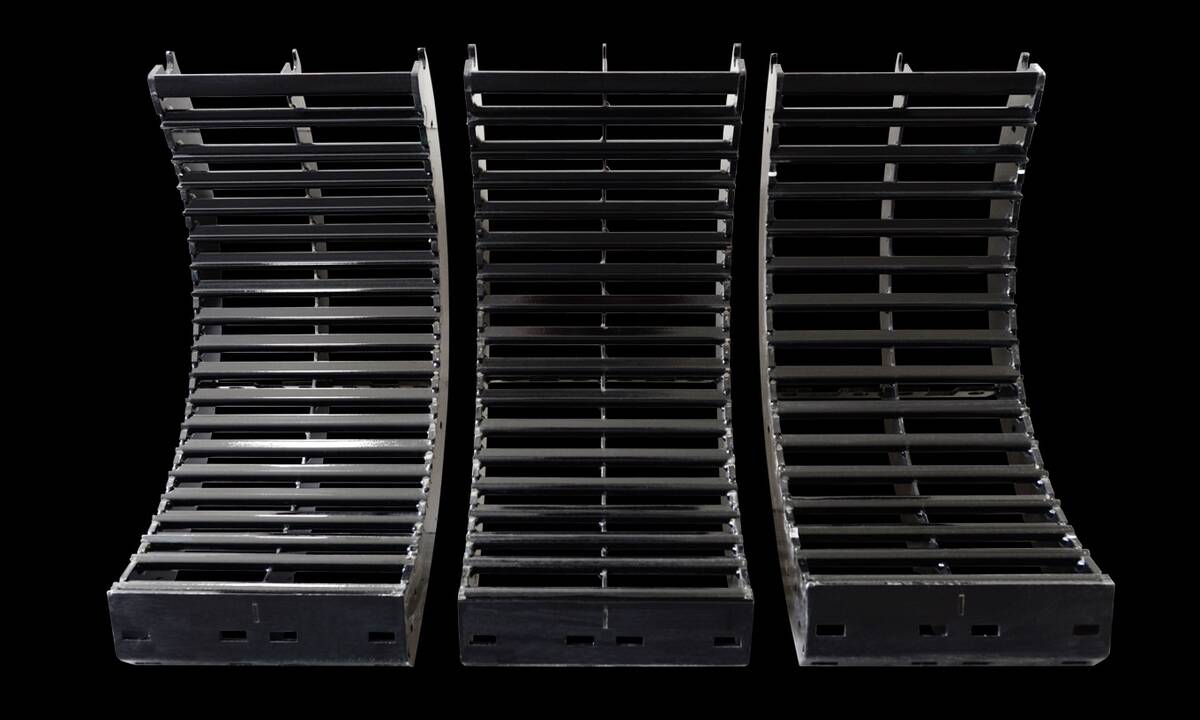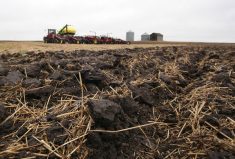It was a year in which almost everything that could go wrong did for Manitoba soybean producers. But in the end, things turned out surprisingly well.
“We were very happy with the yields,” said Bruce Brolley, a Manitoba Agriculture, Food and Rural Initiatives pulse crop specialist.
You wouldn’t have known it from producers attending St. Jean Farm Days here Jan. 7-8. When Brolley asked them about problems experienced with soybeans during the 2008 growing season, their answers were quick in coming.
Cool weather, a short growing season, harvest losses, aphids and crop rotations headed the list.
Read Also

MANITOBA AG DAYS 2026: Stacked equipment category expected at Innovation Showcase
Ten of 28 Innovation Showcase entries at the Manitoba Ag Days 2026 farm show Jan. 20-22 in Brandon are in the equipment category.
All the more amazing, then, that overall soybean yields in Manitoba averaged an estimated 38 bushels an acre, compared to the long-term average of 30-32 bushels an acre, according to MAFRI.
However, yields varied widely from a high of 60 bushels an acre to lows of 20 bushels or less, depending on the location.
Some soybean fields near Beausejour remained unharvested because the ground was too wet, Brolley said.
Wet weather was also a problem during seeding, forcing some producers to “mud in” their crops during a critical period in mid-May, he said.
But the main challenge in 2008 was cool weather, which delayed maturity.
Soybeans are a warm-weather crop and the weather during much of spring and summer was anything but conducive to development.
Average temperatures were below normal throughout May, June and July. Only in August did Manitoba break a six-month consecutive string of below-normal temperatures.
One slide in Brolley’s PowerPoint presentation showed a soybean test plot near St. Adolphe with lush, green plants that were nowhere near ripening. The picture was taken Sept. 4.
A cold front on Sept. 15 lowered overnight temperatures to 3C, raising further fears of a crop disaster.
But conditions improved after that, allowing seeds to ripen.
Brolley said late-developing crops were able to catch up because short summer nights and long daylight hours forced plants into a reproductive mode, enabling them to overcome the cool-weather delay.
However, many plants ended up unusually short in height, creating problems at harvest.
Brolley said growers prefer to cut soybeans at a height of 3.5 to four inches, although they can go as low as one inch off the ground. Even so, some producers ended up with relatively high seed losses below the cutter bar.
MAFRI estimates four soybean seeds for every square foot translates into a harvest loss of one bushel per acre. Brolley said some fields near Dugald and Beausejour left 20 seeds per square foot on the ground, resulting in a five-bushel-an-acre loss.
Sprayed for aphids
Soybean aphids were prevalent in 2008, although Brolley said insecticide spraying helped prevent major crop losses.
MAFRI considers spraying economically viable at a threshold of 700 aphids per plant. Producers may consider spraying at 250 aphids per plant and have a seven-day window to do so.
Soybean aphids were last a problem in 2006. MAFRI says aphid infestations usually go in two-year cycles, so they may not be a major problem in 2009.
Manitoba farmers planted 312,000 acres of soybeans in 2008, the second-highest acreage on record. The all-time high was 360,000 acres planted in 2006. Manitoba had very little commercial soybean production before 1998.
Brolley was wary when asked for his 2009 soybean acreage prediction. Farmers so far this year are very unsure of their planting intentions because of uncertain markets in a worldwide recession, he said.













